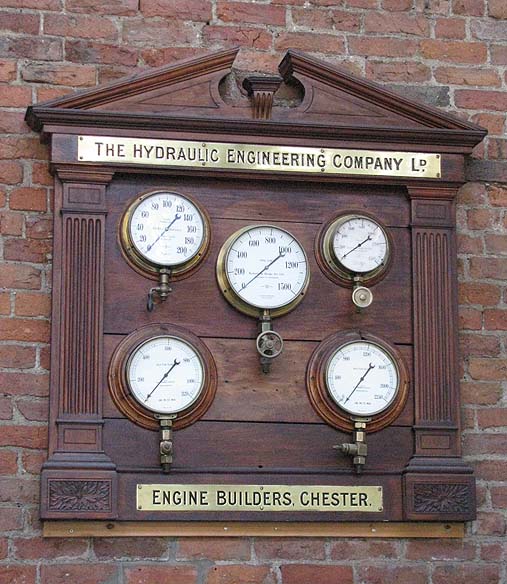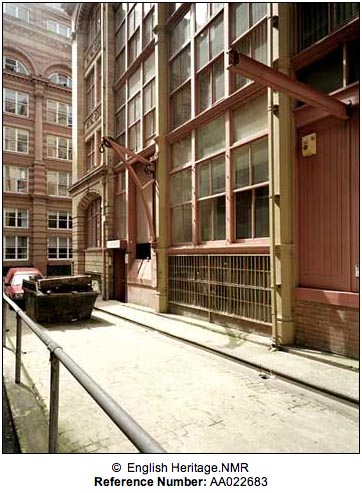|
The Pumphouse - People's
History Museum
Standing just off Bridge
Street on Water Street, beside the Irwell, the
Pumphouse has signs outside identifying it as The
People's History Museum but photographed here in May
of 2008 it was closed and would stay that way until
2010. Visitors to Manchesters Museum of Science
and Industry can see an interesting exhibit explaining
the history of this unassuming building. The
exhibit explains that: "In 1891 Manchester
Corporation decided to build a network to distribute
hydraulic power to the city." A power station
was built on Whitworth Street and the system opened in
1894.
In 1895 there were 12
miles of hydraulic pipes under the city streets.
The network provided power for 247 machines. By
the 1930s, this had grown to 35 miles of pipes working
some 2400 machines. - The map below from MOSI
show the extent of the pipe system -
The first power station
was built on Whitworth Street and in 1899 a second one
was added on Pott Street. This station on Water
Street was added in 1909 as demand increased.
(Note: the water storage
tanks at the back of the building.) In Manchester, hydraulic
power was mostly used by presses that packed cotton
bales. In the city’s warehouses, these presses
worked in the basements. Hydraulic powered
cranes on the ground floor or higher floors lifted the
goods onto vehicles for shipment to the
customers. Elsewhere in the city hydraulics
drove lifts, moved railway wagons, and even wound the
Town Hall clock and raised the Opera House safety
curtain.
One of the original
pumping units from the Water Street Pump House In the 1920s the steam
pumps were converted to electric drive. The use
of electricity began to spread throughout the
city. The Pott Street Station closed in 1939 and
from 1948 the system began to be abandoned. By
1968 only 25 miles of pipes were used. Four
years later on December 26, 1972, the Water Street
Station was closed bringing the use of the system to
an end.
The pipe
network has been used by Cable & Wireless to lay
fibre optic cable around the city.
In 1994 the Pumphouse
became home to The People's Museum. It housed
museum galleries, a café, shop, corporate facilities
and education service. In 2008 a major redevelopment
of the museum began. This involved the
construction of a new extension and the refurbishment
of the existing pump house. An award of more
than £7million from the Heritage Lottery Fund and a
£2m grant from the Northwest Regional Development
Agency financed the project.
Above: The image of
the new museum at the construction site.
To see the process of
construction from hole in the ground to completion,
select the menu option on the left. Dr. Tristram Hunt, HLF
trustee and historian, said that when it reopens “The
People's History Museum's new galleries will uniquely
present the story of the growth of democracy in
Britain, in which the city of Manchester played such a
crucial part.”
When I visited the museum in March of 2010 the construction phase was over and the museum was open for visitors.  To see what it looks like inside choose that option from the menu on the left. Close Window |
|









